San Antonio, Texas is a wonderful place to live for a number of reasons. Its affordability, stable job market, and incredible food scene attract many people to San Antonio. Unfortunately, there is one downside.
San Antonio is warm enough to have active insects year-round and when temperatures soar, the heat drives these bugs indoors to look for a cool place to hide. Thankfully most of San Antonio’s spiders are harmless. Let’s take a look at 12 common creatures that make their home in the city.
What Weather Do Spiders Like?
Spiders are common in San Antonio year-round. However, a spider’s ideal temperature is around 70°F according to Romney Pest Control. In Texas, this means that spiders are most active in the spring. They may also move indoors to escape hot weather and find a cool place to hide.
Spiders also populate homes year-round. In fact, fewer than 5% of the spiders seen in homes ever set foot outside! Whether it’s in your garden or your house, let’s take a look at common spiders in San Antonio, and whether or not they pose a threat.
Non-Venomous Spiders
Classifying spiders into venomous and non-venomous is actually a little misleading. According to the National Library of Medicine, all spiders (except for two small groups in the arachnid family) have poison glands. However, most spiders rarely bite humans and their venom is so weak that it will only cause minor irritation in humans.
1. Grass Spider
Grass spiders are a common species found in Texas. These creatures are harmless to humans and are known for their flat, webs with a funnel-like shape at the end, writes Beeline Pest Control. Grass spiders hide at one end of their web and wait to run rapidly and catch their food.
They eat a variety of insects such as flies, moths, beetles, and grasshoppers. Grass spiders can vary in color from light brown to dark grey with two darker bands running down their back. Since grass spiders are not aggressive, it’s best to leave them undisturbed if you spot them in your yard.
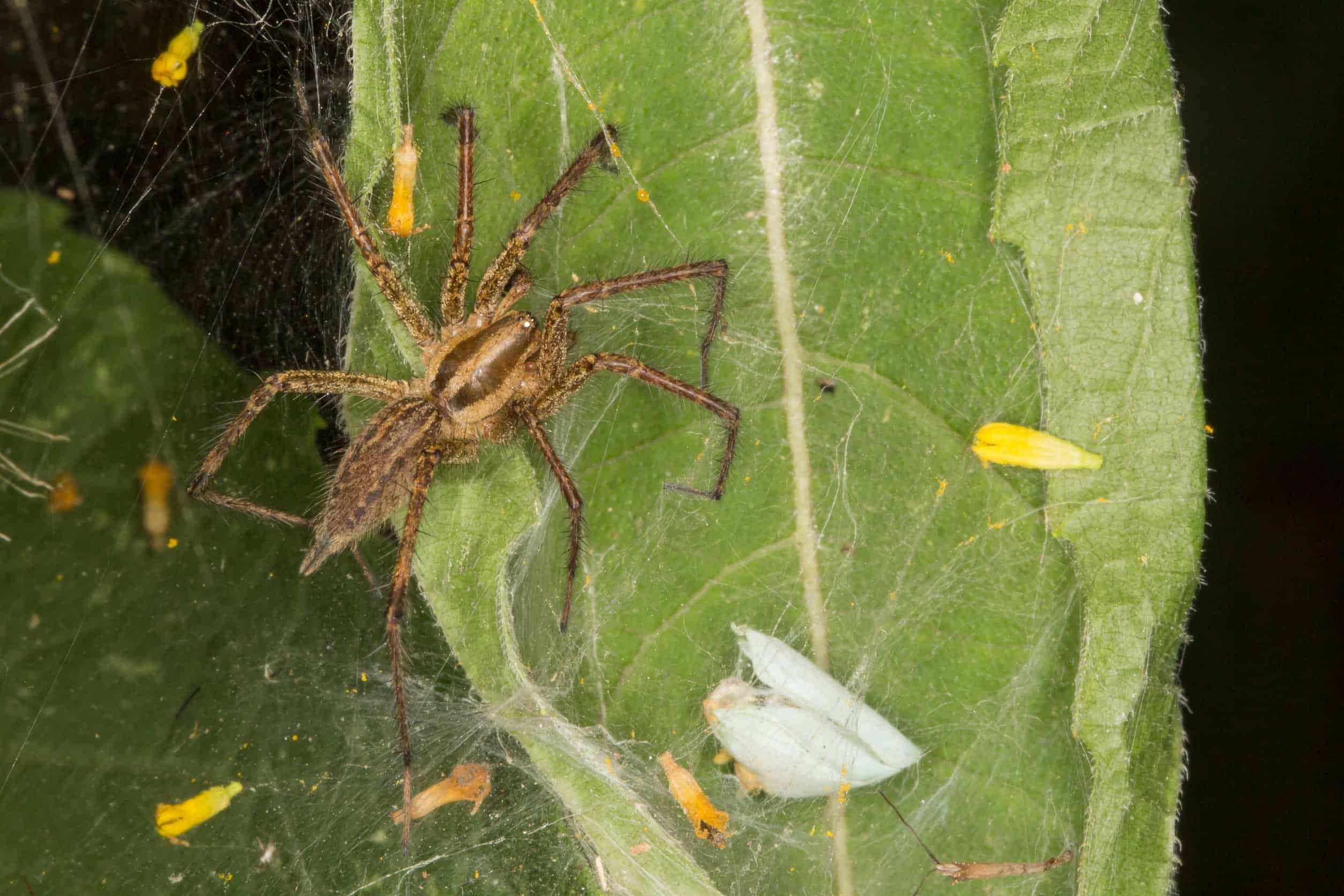
Grass spiders are light brown in color with two darker bands
©Elliotte Rusty Harold/Shutterstock.com
2. American House Spider
The American house spider frequently appears in homes throughout the United States. Thankfully these creatures prefer to run and hide when they feel threatened. Their bites are generally not dangerous, though some people may have an allergic reaction.
This species is usually dull brown in color with markings on its abdomen. American house spiders build their webs in corners of homes such as door frames and light fixtures. You can prevent these spiders from infesting your home by eliminating their food source — insects and other spiders. Vacuuming frequently into the crevices of your house helps get rid of house spiders.
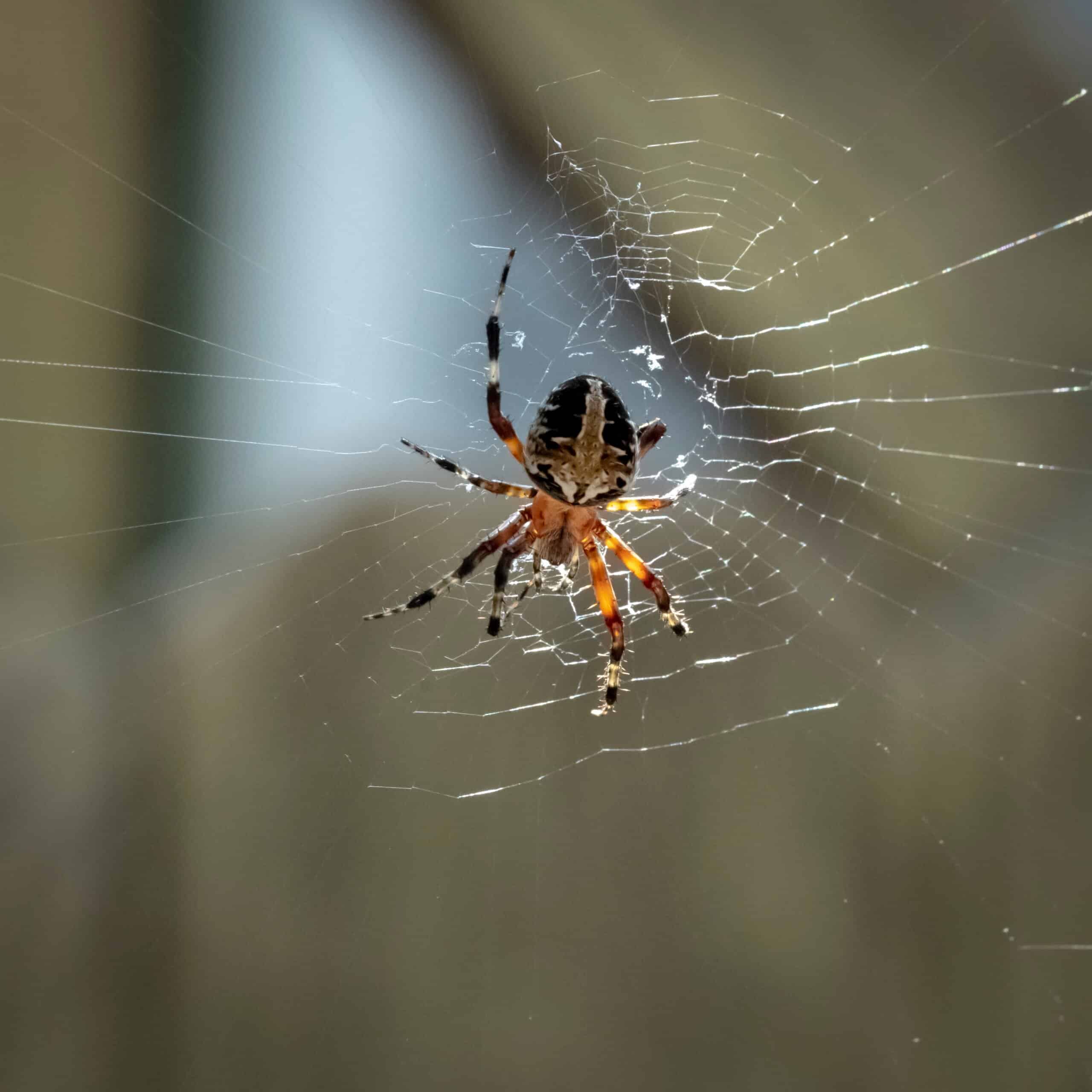
American house spiders commonly build their webs in the corners of homes.
©Constantine Lukashin/Shutterstock.com
3. Long-Bodied Cellar Spider
Long-bodied cellar spiders are harmless creatures commonly mistaken for daddy long-legs. They have a similar appearance to this arachnid, with small bodies and very long legs. Their bodies are typically brown or gray with yellowish legs covered in short hairs.
These creatures feed on insects and are capable of killing creatures larger than themselves, such as wolf spiders. As their name suggests, long-bodied cellar spiders make their way into dark, damp places including cellars, basements, and crawl spaces. While they are harmless to humans, cellar spiders can be a nuisance.
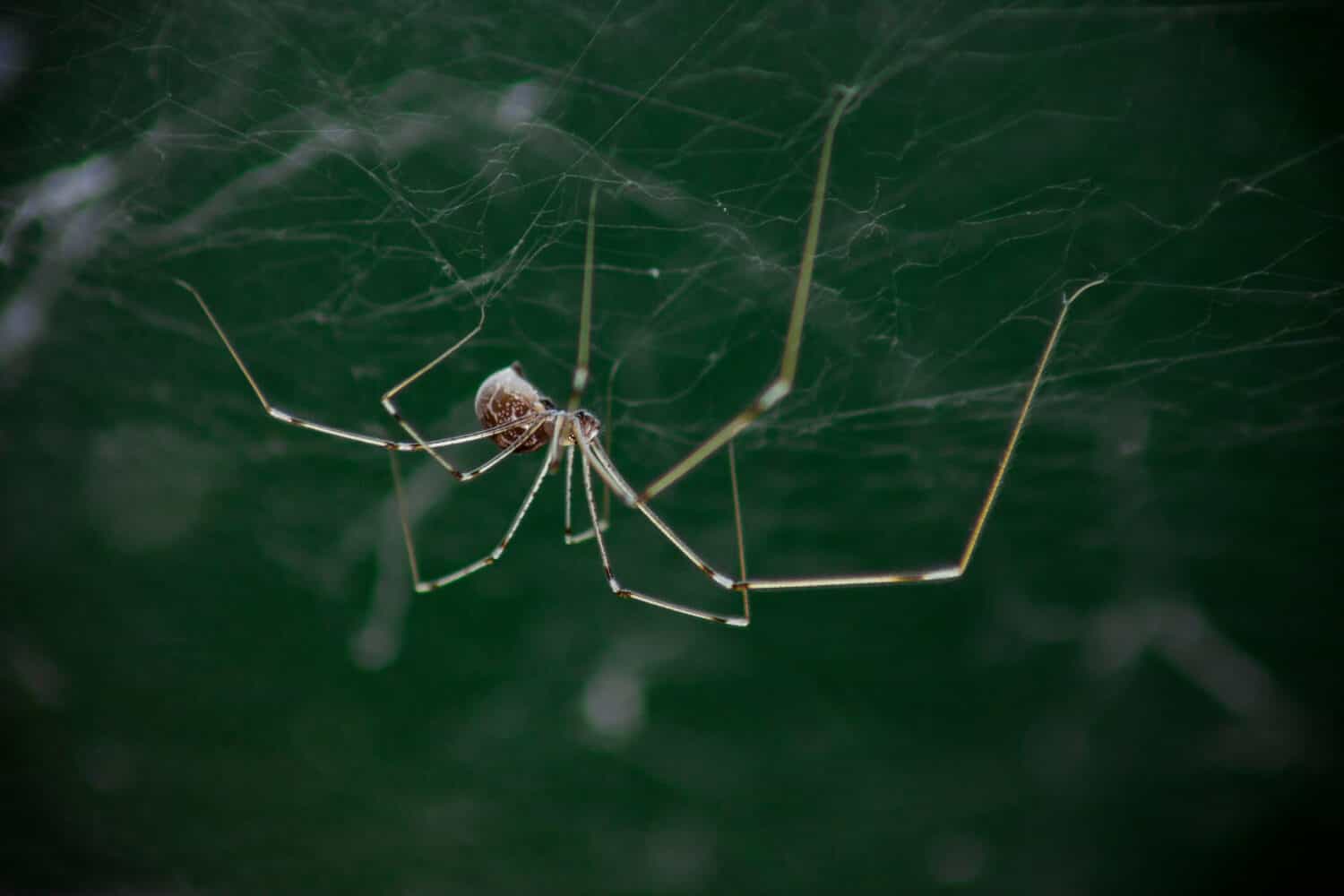
Long-bodied cellar spiders have small bodies and very long legs.
©CsaboPhoto/Shutterstock.com
4. Orb Weaver
Orb weavers are known for spinning intricate spiral, wheel-shaped webs to catch their prey in gardens, fields, and forests. Thousands of species of orb weaver live throughout the world and common creatures like the garden spider and barn spider can be found crawling around San Antonio.
Orb weavers come in a variety of shapes, sizes, and bold colors. They are also sexually dimorphic, and females grow about four times the size of males. Orb weavers get their names from the circular webs they build. They are not dangerous to humans and can actually be very beneficial. These creatures help to control nuisance insect populations.

The orb-weaver spider gets its name from the intricate webs it builds.
©Eifel-Details/Shutterstock.com
5. Woodlouse Hunter
Woodlouse hunters are truly unique-looking creatures. Instead of the black, brown, or gray coloring found among most spider species, the woodlouse hunter has a red or orange body and a grayish-white abdomen.
You can probably guess the woodlouse hunter’s favorite prey. These creatures enjoy moist environments where woodlice thrive. They hunt by chasing their prey or lying in wait to attack with their powerful jaws. They then wrap their prey up in silk to eat later. Woodlouse hunters can deliver painful bites thanks to their large fangs. However, their venom isn’t dangerous to humans.

Woodlouse hunters have a distinctive-looking red or orange body with a grayish-white abdomen.
©Macronatura.es/Shutterstock.com
6. Crab Spider
Crab spiders can be found in open pastures, meadows, and wooded regions in San Antonio. These creatures have short, broad bodies and distinctive markings. They are named after their tendency to “crab walk” sideways on their four long front legs. The species’ shorter back legs are used for running and jumping.
Crab spiders do not make webs to catch prey, but their long front legs are useful when grabbing prey such as grasshoppers, flies, moths, and beetles. Crab spiders may bite humans, but their venom is not dangerous to humans. In fact, crab spiders are usually too small for their bites to even break human skin.

The crab spider gets its name from its tendency to “crab walk” sideways.
©HWall/Shutterstock.com
7. Gray Wall Jumping Spider
The gray wall jumping spider is an interesting species. These creatures are easily identifiable by their particular gray color and short, dense hair.
Their name comes from their ability to jump from place to place and their long, thin legs. The gray wall-jumping spider comes out at night to hunt insects, locating them with their eyesight and pouncing with their powerful hind legs.
Living in San Antonio is no problem for the gray wall jumping spider. These creatures are known for their resilience and can survive in places with extreme temperatures and little water sources.
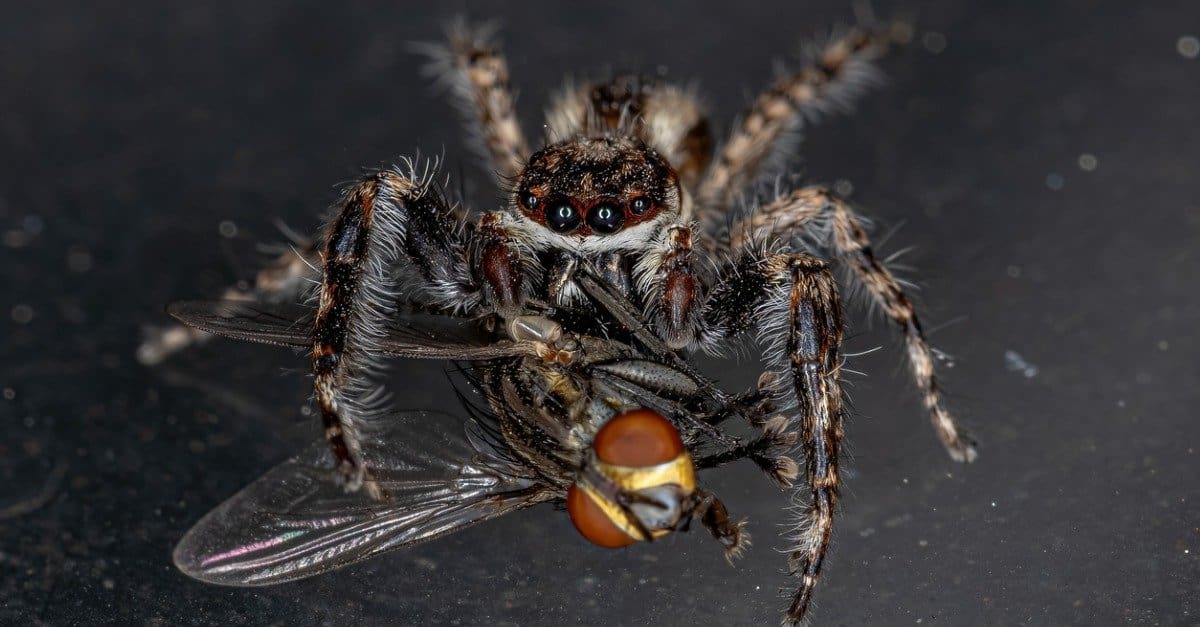
Jumping spiders eat flies, wasps, grasshoppers, and more. They are mostly carnivorous.
©iStock.com/ViniSouza128
8. Wolf Spider
Wolf spiders are some of the most common species in San Antonio. Though their name and appearance may seem intimidating, wolf spiders are not considered dangerous to humans. Their venom is weak and they do not typically bite humans unless provoked.
Wolf spiders are a large species of arachnid that measure up to two inches in size. These creatures get their name from their tendency to use their speed and excellent eyesight to hunt down prey, rather than building a web. Wolf spiders are also brown in color with bristly hair and tan stripes.

Wolf spiders are brown and furry and grow to a few inches in length.
©Cathleen Wake Gorbatenko/Shutterstock.com
9. Brown Widow
The name black widow probably sounds familiar, but did you know there are brown widows too? These spiders are actually a cousin of the more well-known black widow and thankfully, they aren’t anywhere near as dangerous.
Brown widows inject a much smaller amount of venom than the black widow. For this reason, their bites typically don’t cause more damage than site irritation, though seeking medical attention may still be a good idea. Additionally, only female brown widows bite, and they aren’t aggressive.
Brown widows enjoy tropical parts of the world, but they can also be found in Texas. They have a distinctive yellow-orange hourglass design on their abdomen, with a mostly brownish body, and gray-mottled legs. Like many spiders, they are attracted to cluttered spaces where they can hide.

Despite the brown widow’s scary appearance, they are far less dangerous than black widow spiders.
©iStock.com/ViniSouza128
10. Texas Brown Tarantula
Multiple species of tarantula make their home in the Lone Star State. The Texas brown tarantula is widespread in the state, especially in central Texas. Although tarantulas have a bad reputation, they aren’t harmful to humans. In fact, this species is becoming a popular pet in the United States due to its gentle nature.
Tarantulas probably seem scary due to their large size. According to the Missouri Department of Conservation, the Texas brown tarantula is a stocky creature and females measure two inches in length (not including their legs) on average. Males are typically slightly smaller. This tarantula is dark chocolate brown and covered in hair. Like wolf spiders, Texas brown tarantulas hunt to catch their prey, rather than spinning webs.
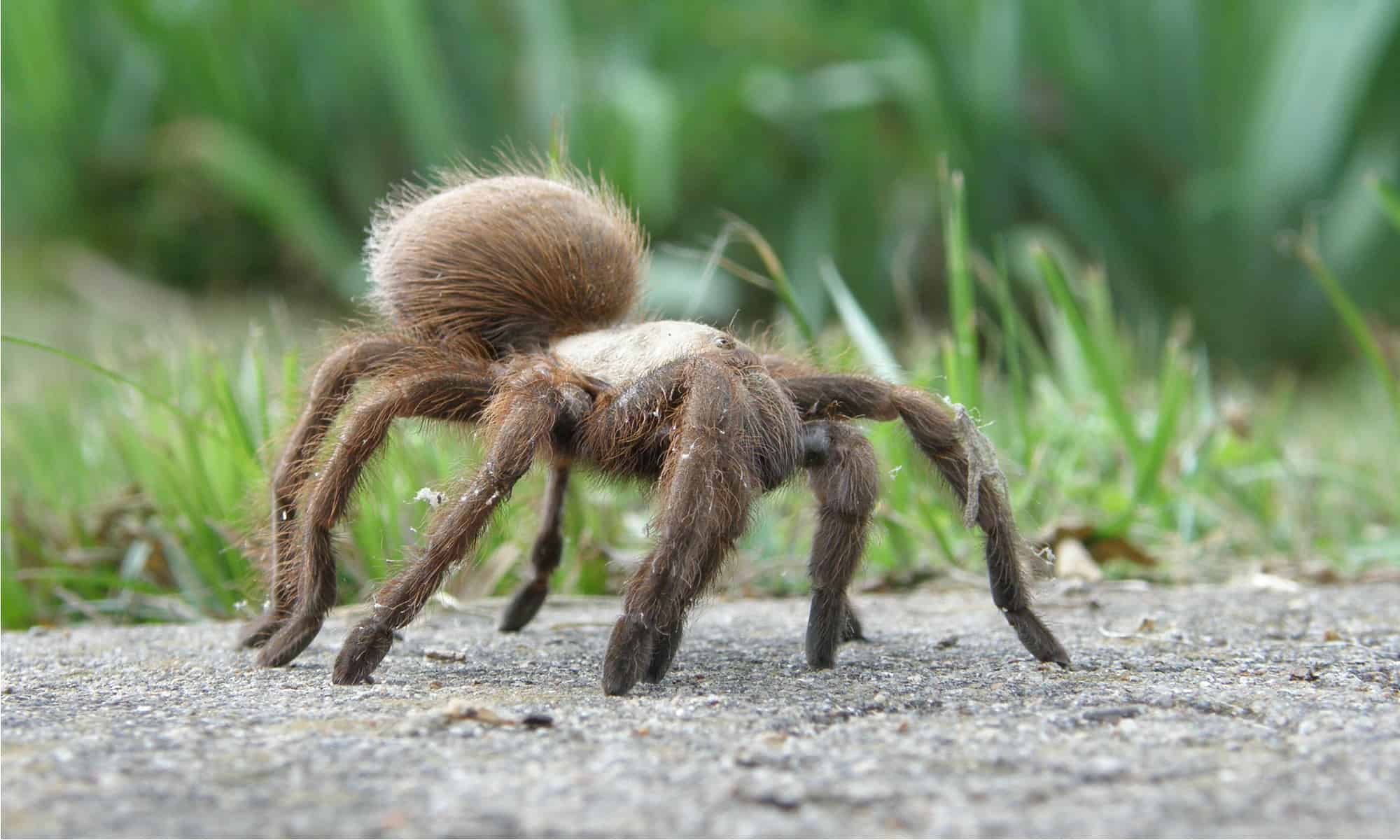
The Texas brown tarantula is quite docile. Its bite hurts but isn’t dangerous.
©texas brown tarantula/Shutterstock.com
Venomous Spiders
The Texas Department of State Health Services states that only two spiders crawling around San Antonio produce venom powerful enough to be medically significant in humans. Let’s take a look!
11. Black Widow
You’ve probably heard of the black widow spider. Its scary-sounding name comes from the female’s tendency to eat the male after mating. Black widows are common in North America, especially in the southern and western United States. They are distinguishable by their jet-black color and the reddish hourglass shape on their underside.
Black widows produce an incredibly powerful venom that is reportedly 15 times more toxic than that of a prairie rattlesnake. Fortunately, these creatures can only release very small amounts of this venom at a time.
Still, a bite from a black widow spider can be dangerous — especially to children and older adults — and requires medical attention. Symptoms can include abdominal cramping, convulsions, headache, nausea, vomiting, and lesions at the site of the bite, to name a few.
Thankfully black widows are not aggressive creatures. They can often be found in undisturbed areas such as in woodpiles, boxes, and even outdoor toilets. Most bites occur when humans accidentally trap or disturb these creatures or their webs.
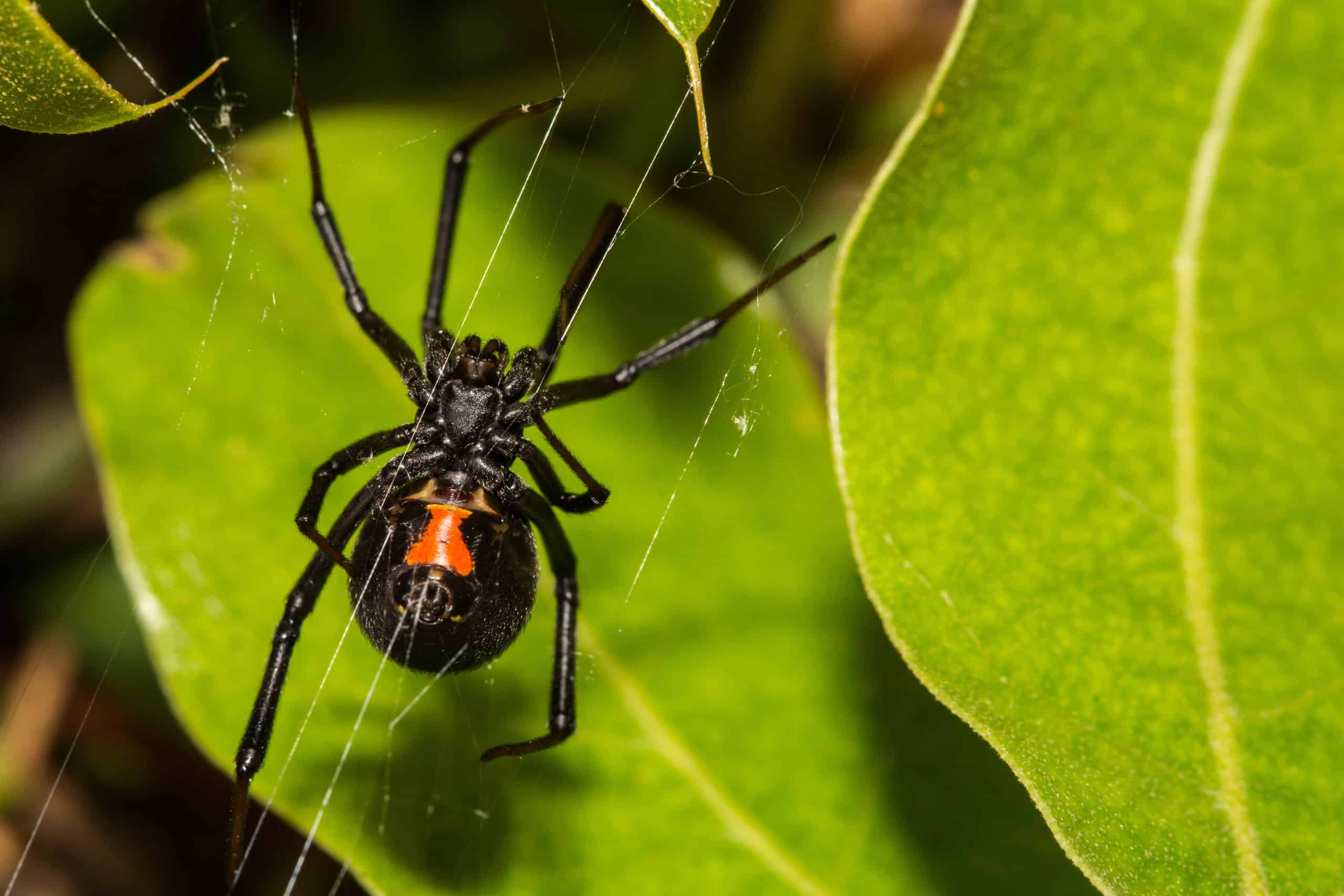
Black widow spiders are dreaded for their venom.
©Jay Ondreicka/Shutterstock.com
12. Brown Recluse
The second spider in San Antonio that produces medically significant bites in humans is the brown recluse. As their name suggests, these creatures are golden brown in color with a darker brown, fiddle-shaped mark on their heads.
Brown recluse spiders typically prefer dark, undisturbed areas. They often hide out in basements and garages between boards, boxes, and old towels or may even be found in piles of clothing.
Like the black widow, brown recluse spiders are not aggressive. Bites usually occur when they are accidentally disturbed or trapped. Brown recluse spider bites contain necrotizing enzymes and can cause symptoms such as chills, fever, nausea, necrosis, and red white, and blue lesions at the bite site.
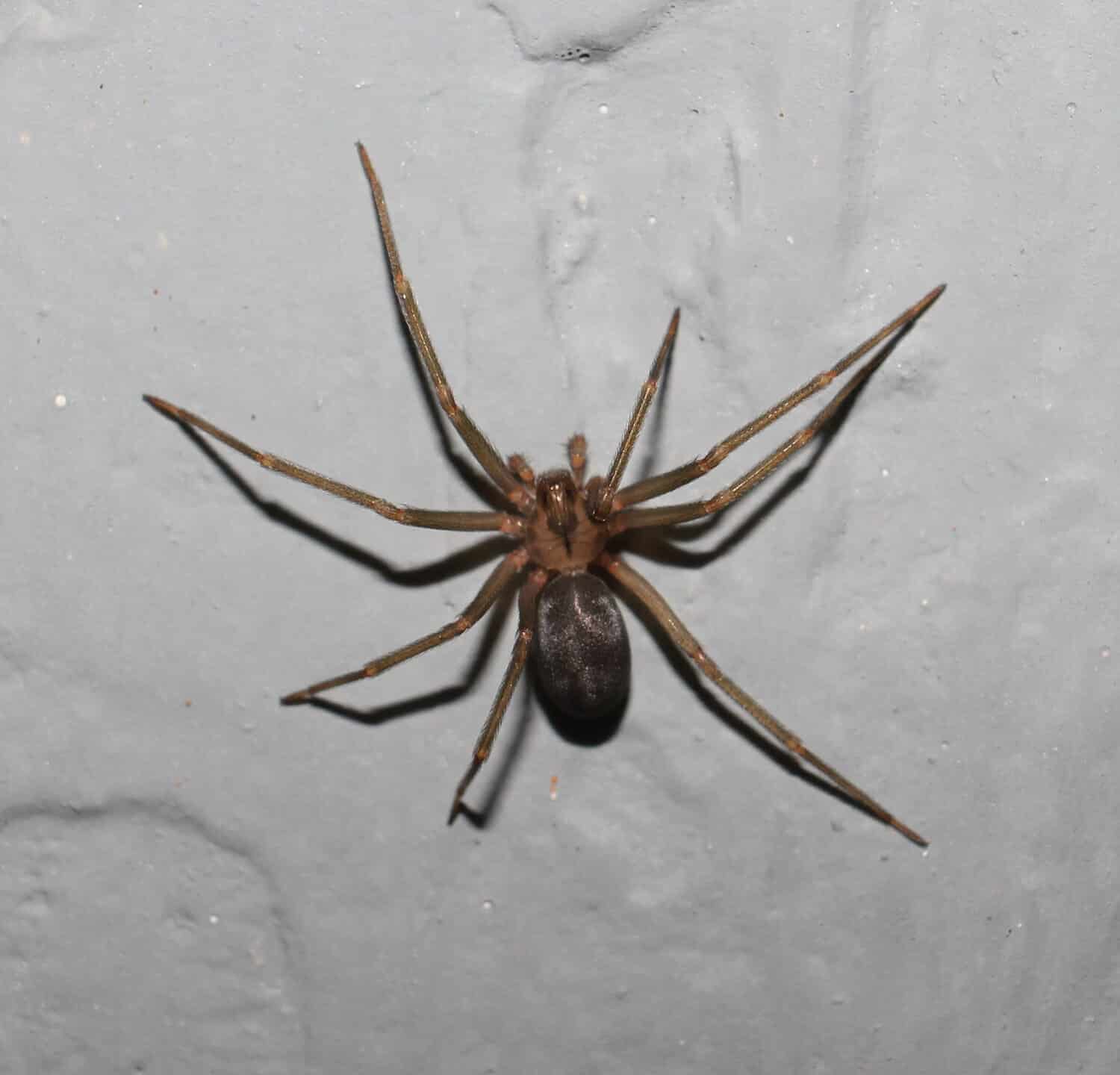
Brown recluse bites cause skin lesions and necrosis.
©Keith Davis/Shutterstock.com
Summary of 12 Spiders Crawling Around San Antonio
| Number | Spider | Dangerous to Humans? |
|---|---|---|
| 1 | Grass Spider | No |
| 2 | American House Spider | No |
| 3 | Long-Bodied Cellar Spider | No |
| 4 | Orb Weaver | No |
| 5 | Woodlouse Hunter | No |
| 6 | Crab Spider | No |
| 7 | Gray Wall Jumping Spider | No |
| 8 | Wolf Spider | No |
| 9 | Brown Widow | Not typically |
| 10 | Texas Brown Tarantula | No |
| 11 | Black Widow | Yes |
| 12 | Brown Recluse | Yes |
The photo featured at the top of this post is © Christine Bird/Shutterstock.com
Thank you for reading! Have some feedback for us? Contact the AZ Animals editorial team.







